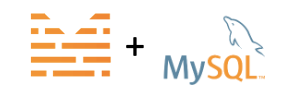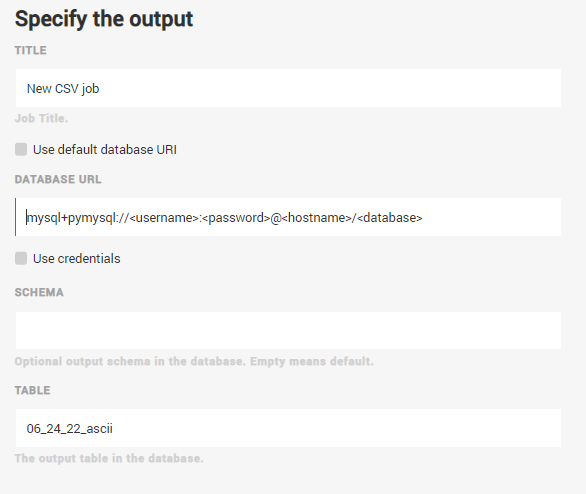This documentation describes a release under development. Documentation for the latest release, 3.6.2, can be found here.
MySQL¶
MySQL can either be used as a data source or a data destination in Mitto.

Source plugin example: Query
Destination plugin examples: CSV, Salesforce, SQL
MySQL as a data destination¶
Mitto automatically creates the MySQL database if it doesn’t exist
Mitto automatically creates the MySQL database tables if they don’t exist
Mitto automatically determines data types for MySQL columns
Mitto automatically adds new columns to MySQL tables based on new fields in source systems
MySQL specific setup¶
Below is the database url structure for connecting to a MySQL database:
mysql+pymysql://<username>:<password>@<hostname>/<database>
Here’s an example of using a MySQL database as a destination in a CSV job:

Note
Unlike databases like PostgreSQL , MySQL doesn’t have the concept of schemas.
When using MySQL as an input or output database, you have two options:
Leave “Schema“ blank and append the database name to the end of the database URL.
"output": { "dbo": "mysql+pymsql://{user}:{password}@{host}:{port}/{database}", "tablename": "{tablename}", ... }
Put the database name in the “schema” section and remove it from the end of the database URL.
"output": { "dbo": "mysql+pymsql://{user}:{password}@{host}:{port}/", "schema": "{database}", "tablename": "{tablename}", ... }
SQL¶
Mitto can send SQL statements to a MySQL database. Use MySQL syntax in these Mitto SQL jobs.